


Mother and Son as Oyakodon
Peyton Chiang
A communication booth optimized to produce the singular dish of oyakodon. Designed to be efficient and equipped with all necessary ingredients, cookware, utensils, and dishes to cook.
Within this space, actions that resist acceleration are performed. For 46 minutes and 35 seconds, I cook oyakodon and call my mom. A performance about intention-about Fate Work.
Software: Rhino



Hold
Chiyu Zheng
This is a speculative design about emotional satisfaction through physical touch. The design of hold, a concept aimed at enhancing emotional health through the power of physical touch. The system provides a platform where users can engage with interactive, touch based experiences to engage real-life emotional connection. Hold integrates sensory feedback mechanisms. This concept is provided through multi-platform design.



MA
Asem Kiyalova
n some cultures, there is a superstition that people born during a full moon tend to understand others’ emotions better and form deeper bonds with their mothers. While this idea lacks scientific evidence, as someone born under a full moon, I often feel a heightened sense of empathy and a deep connection to emotions, particularly those tied to the mother-child bond. This inspired me to explore our emotional relationship with motherhood.







Daricheh
Mahsa Masoumi
It all began with a Persian story: The conference of the birds. Thirty birds on a journey decided to find their king, the Simorgh. Their path takes them through seven valleys. In the end, they realize that the Simorgh is not a distant ruler, but a reflection of themselves.





Cellular Balance
Rachel herring
Redesign Your Smartphone and Reclaim Your Time
Cellular Balance began during the pandemic and developed through three years of iterative research. The project encompasses an interactive four-week workbook, a responsive website, socially active workshops, and an experiential installation. It is a toolkit for those who wish to reengineer their smartphone relationship without doing away with digital devices.





Corina Coughlan
The research began with the experience of being tracked as an athlete at Rutgers and was informed by Data Feminism, and a desire to make data more holistic and accessible through visual storytelling and immersive experiences.






Token Provenance
Sophie Auger
In the NFT economy, images are often irrelevant; they serve as substitutes for the transactional context. Paradoxically, NFTs are at the same time cryptographically unique; they are not interchangeable. This paradox, coupled with the intangible nature of a new technology still in the making, feeds the work Provenance, which explores the experience and the status of the NFT in the context of the art world as well as its impact on notions of archiving. There is a distinction between two types of NFTs; one is a digital-born file, the other is a physical object that has been digitized for archiving purposes. But physical or digital, blockchain reroutes the provenance of objects; once made token, the NFT is born and its provenance is made digital. The works in the exhibition are derivatives of their tokenized originals. In this context, the artwork derives from its archive.






Sanaz Feizi





Saba Maheen



Collaborative web project
Melisa Tekin, Corina Coughlan, Rachel Herring
Thesis Exhibitions
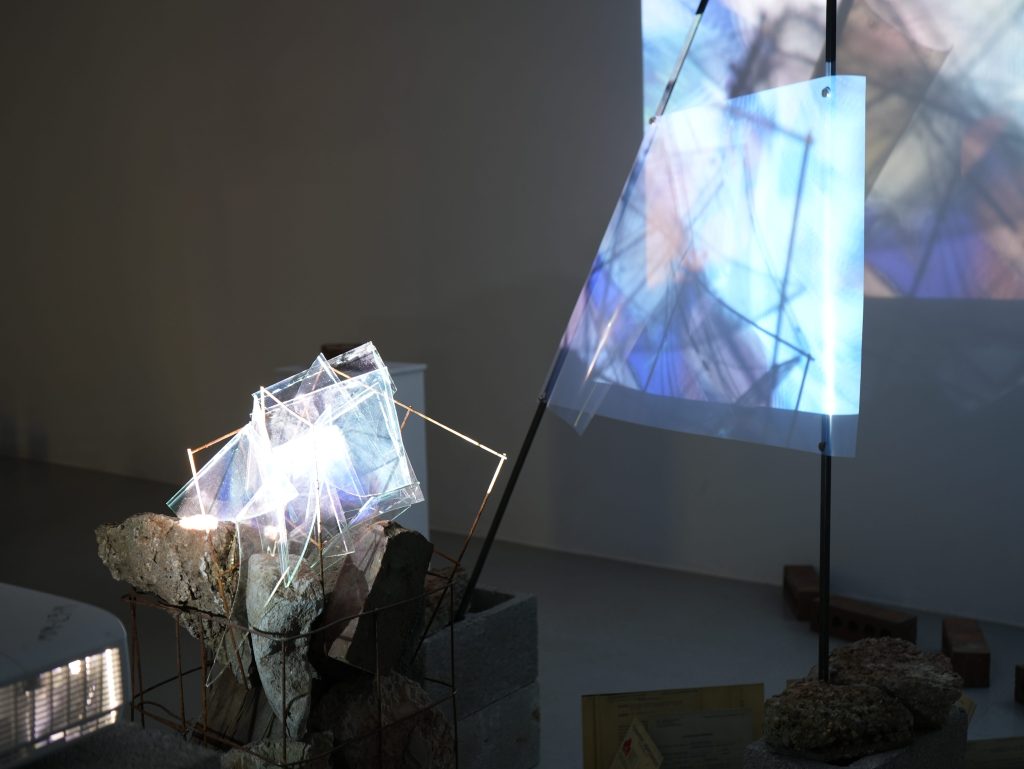
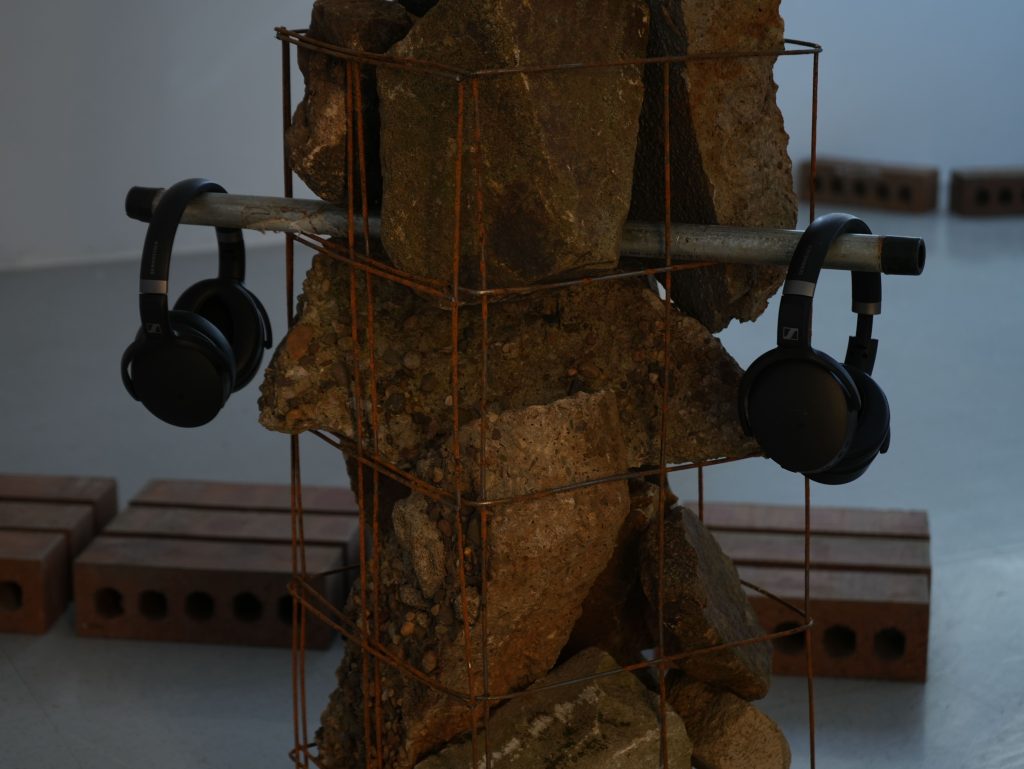
Tonwerk: Designing for Multidirectional Remembrance installation, bricks, cinder blocks, steel, projections of remembrance events fragmented through shattered glass. sound, dimensions variable, 2023

Ryan Lilienthal’s Tonwerk: Designing for Multidirectional Remembrance, is a sculptural data visualization. The installation consisted of a dark room illuminated by fragmented projections scattered on the gallery walls. Two pillars of concrete rubble were positioned in the center of the room. Across the floor, three separate lines of clay bricks zigzagged.
The installation also contained a wooden side table with framed family photographs. Other documents leaned against the wall or interspersed between the bricks clustered in various spots along the brick lines. The documents consisted of government memoranda that traced the deaths of Lilienthal’s relatives in the Holocaust.
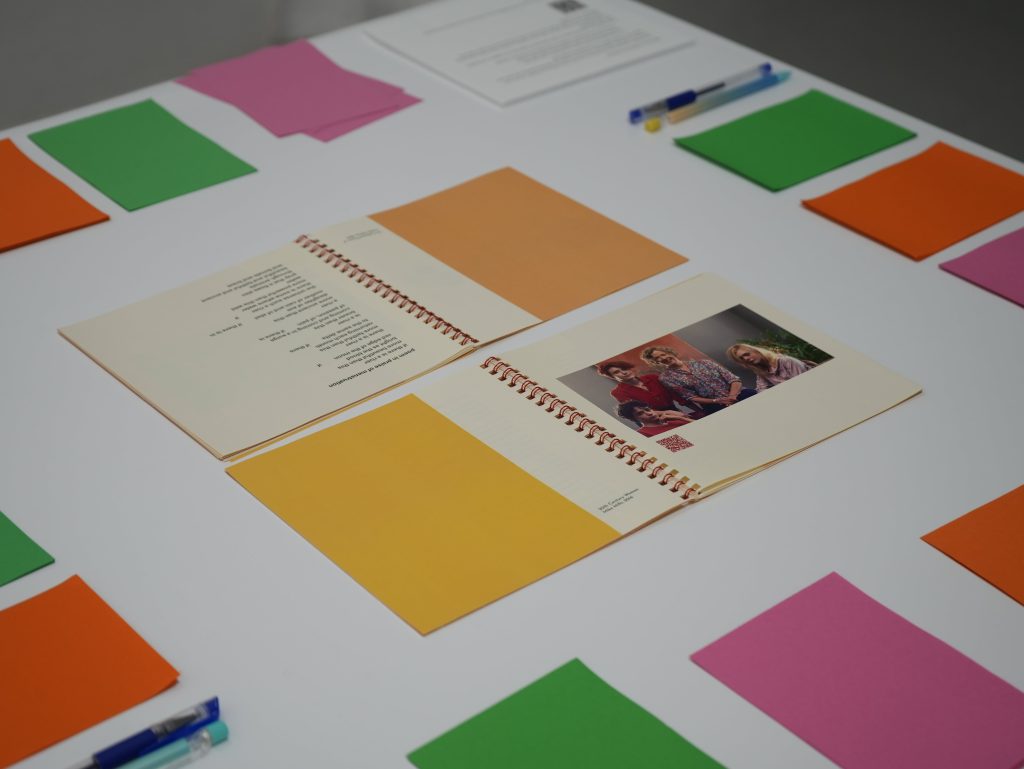
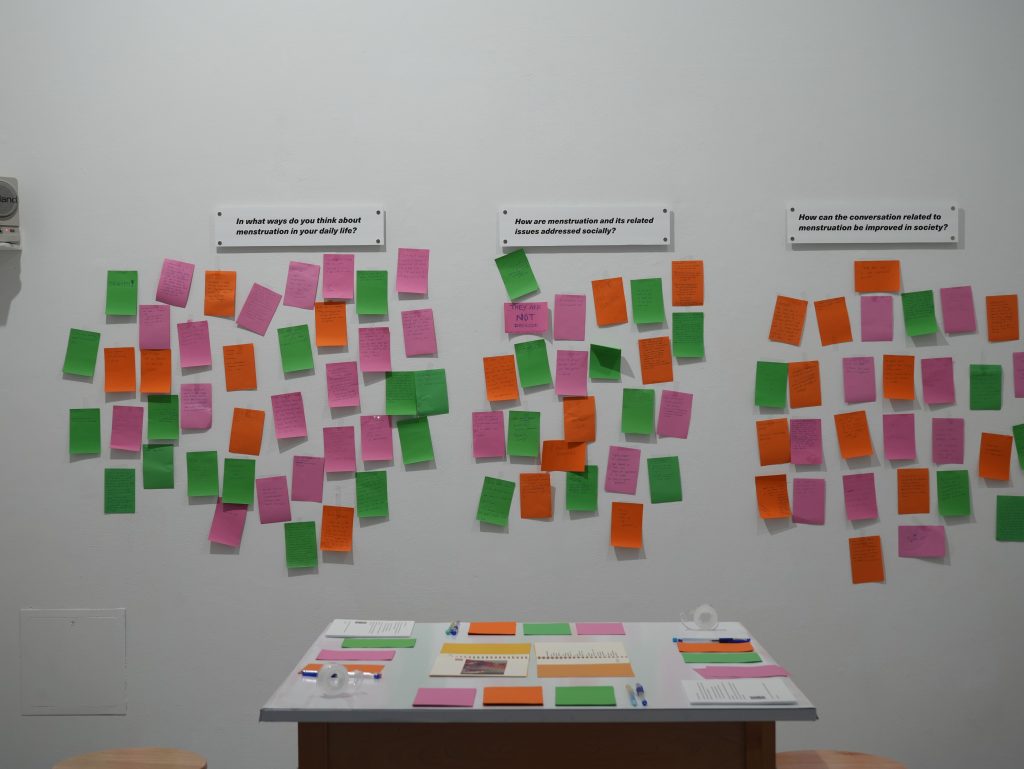
Sanaz Feizi Khankandi’s Unmuted focus on menstruation and the themes of shame and invisibility. It included 43 43-minute edited account of a workshop on menstruation led by the designer in 2022. Participants as they created masks and engaged personal stories and experiences with menstruation. The film utilizes a black background and incorporates video clips presented in horizontal and vertical rectangles.
A white table held colorful sheets of paper, two books from the workshop, pens and pencils, tape, and instructions for participation by visitors. Visitors wrote their responses to prompts about menstruation on small slips of paper and taped them to the wall, under the questions.
Sanaz Feizi Khankandi.Unmuted, mixed media installation, projection, booklets, notes, 2023

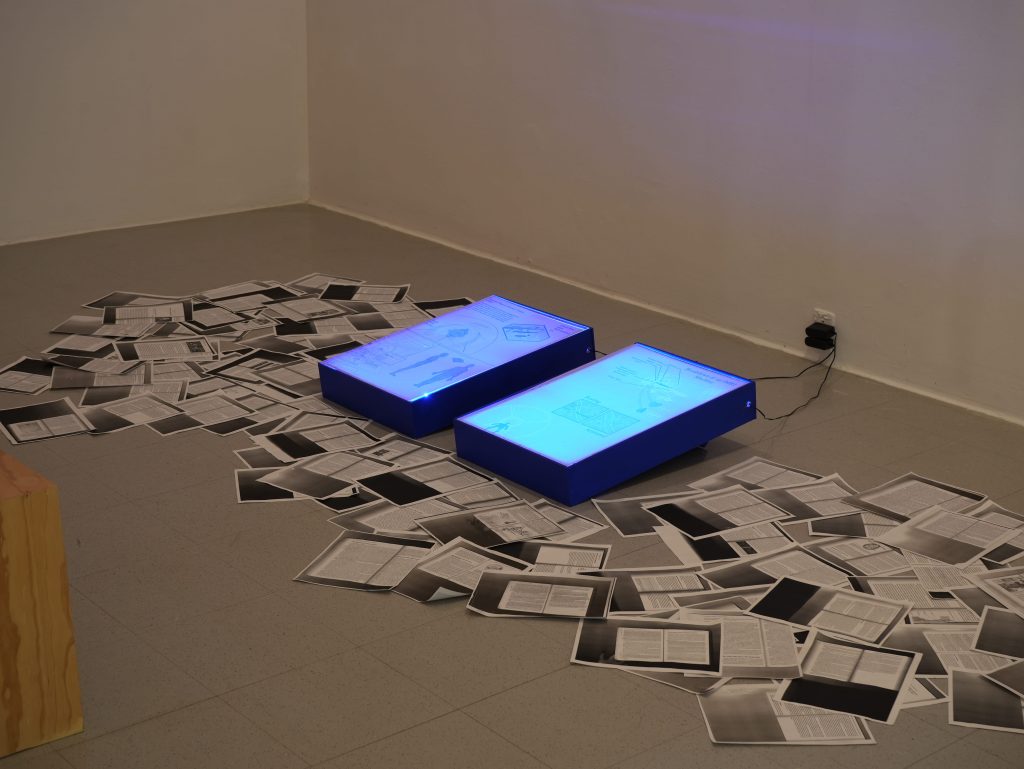
Your Brain on Trauma consisted of two blue light-boxes featuring scientific drawings of medical scanning equipment and photocopied pages fMRI Machines. Photocopied spreads from the book “The Body Keeps the Score” by Bessel Van Der Kolk were scattered randomly on the floor around the boxes.
Take What Resonated and Leave a Trace featured a large circular soft red floor rug woven by the designer and surrounded by low black wooden boxes with red articles placed on them and a scanner printer also placed on the floor. Prints from the scanner were scattered on the floor behind the rug next to the printer. Fallat made a deck of 72 tarot cards with black line drawings of everyday objects. The 72 objects had been selected by an online random object generator. Fallat had drawn the objects digitally and then used an Axidraw machine to transcribe them onto red cards. The relationships between the mechanical/scientific forms of knowledge and other bodily or mystical ways of understanding are the connecting motif of the two linked works.
Kerri Fallat Your Brain on Trauma, and Take What Resonated and Leave a Trace mixed media installations, wool, printer, lightboxes, cards. 2023
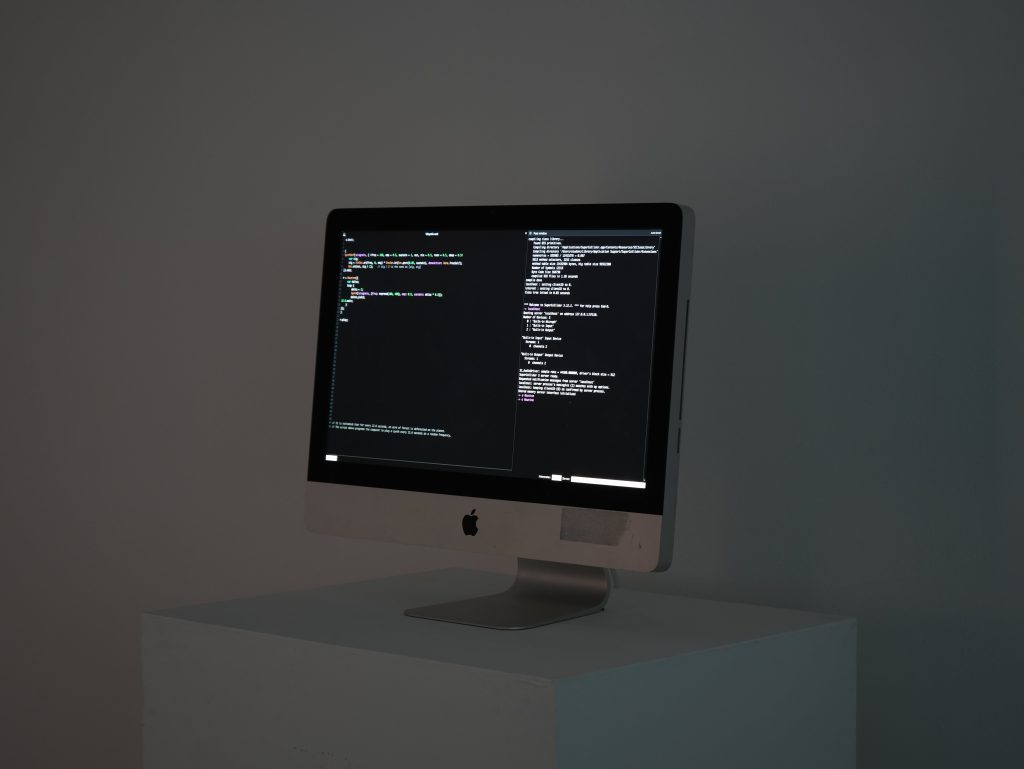

Leona Cheung. Does a falling tree make a sound Mixed media installation, 2023
Does a falling tree make a sound includes a video of Hutcheson Memorial Forest an old-growth forest nature preserve maintained by Rutgers University. This is one of the few remaining forests in the Eastern United States that has never been logged, and as such is suggested a “natural” state. The project moves towards the admittedly unreachable ambition of capturing a non-human experience of the natural world. Two small projections also based on images and sounds collected from the forest were shown on the right. One consisted of the image and sound of a small river in the forest into which Leona had placed a contact microphone. The other was a rapidly rotating image of a tree stump seen from above. The sound for this piece, based on a sample from the river was experienced by headphones. Both small projections used “artificial” color casts in contrast to the natural tones of the large projection. Two mini-projectors showing these images were placed on small plinths. To the right of the forest video a computer monitor placed on a plinth showed code that generated a low tone recurring at intervals of 12.6 seconds.